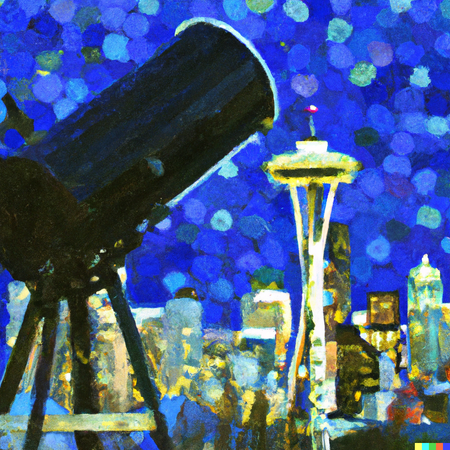There's no denying that smart telescopes are on the bleeding edge of astronomy technology. They are portable, powerful, and easy to use. But is their rapid conquest of the night skies a good thing for astrophotography? Some brands have been making smart telescopes for a few years now, but costs can be preventative for some people, who will instead opt for a traditional astro rig. In October of last year when ZWO’s Seestar S50 smart telescope was making its first appearance on our shelves, I was very excited to see what it could do. I was aware of the smart telescope market at the time, but never did owning one feel so attainable.
Once the Seestar showed up, everything I thought I knew about smart telescopes was shifted. Now there was a small, cheap, but still incredibly powerful smart telescope on the market. Sure the size of it was slightly concerning, especially for someone who mainly enjoys planetary photography–which you typically need a much larger scope for, but seeing the images people were able to make using the Seestar swayed me into purchasing one for myself. On my first night with it, I pointed at Jupiter–rookie mistake! The Seestar’s small size limits its magnification powers, so Jupiter appeared nothing more than a white dot with two barely discernible darker bands running horizontally through it. I was able to see the Galilean moons though which I thought was quite impressive. I quickly learned that planetary photography was not the goal the Seestar had in mind.

Above: Heavily cropped image of Jupiter using planetary mode
After that first night, clouds were plentiful in my area so I didn't get much time to use it for a while. Soon after purchasing it I took a trip down to southern California where the nights are warmer and the skies are clearer. I was able to bring my Seestar with me because of its incredibly small form factor, and better yet, it comes with a foam padded carrying case! On my first night there I pointed the Seestar to its first deep sky object--the Orion nebula. This is perhaps the most famous nebula in the night skies, glowing brightly, rich with star formation. The Seestar took about 10 minutes to get set up, from getting it out of the case to shooting my first frame. The scope exposed its camera sensor for 10 seconds and beamed the image directly to my phone, and I was blown away by the level of detail and color it had managed to capture in such a short amount of time.

Above: Orion Nebula (M42)
From this moment on I was happy with my purchase. I've taken it out every clear night I get to try to see a new nebula or galaxy. It isn't always fruitful; Some objects are too dim for the Seestar, or too big for its relatively narrow field of view. But if you plan your targets and understand the limitations of the scope I am sure it will serve you wonders. The amazing thing to me about the Seestar is how an equally capable traditional setup would cost nearly 5 times more than it, and take 10 times longer to set up and take down.
Anyone with a passion for the night sky and $500 spare can achieve what I was able to do with this scope. And for some that might seem like a problem. Amateur astronomers and astrophotographers spend years optimizing their setup, understanding the ins and outs of their equipment and processing software. Sure they are far more capable than this little robot–or really any of the smart telescopes on the market today, but that doesn't stop it from being frustrating when someone brand new to the hobby takes a beautiful image without even trying. But if you can’t beat them, join them. Just last night I took my main astrophotography rig out on one of the first clear nights of this summer to shoot M3. I ended up being out of focus the whole time so none of my images were usable, but I had the Seestar running during the process, and I ended up with a great shot of the Iris nebula. In that instance I both learned how not to do my photography and also got a cool shot of space in the process. Its like having my cake and eating it too.
So will smart telescopes take the fun out of astronomy? Will they ruin the hobby for everyone? No. I don't think so. A robot taking a pretty picture for you does not have the same emotional attachment as working hard on a project yourself. And for now the pictures that the robots are taking are not really comparable to the best of the best astrophotographers in the hobby. But having a robot sidekick is still satisfying, and its neat to look at the pictures it takes and see what it can do. Perhaps using it like a survey telescope to see how an object looks from your local conditions and then going in with the real astrophotography rig is the way to use these technologies. They are still new, so we don't know where they will go from here, but one thing is for sure, they are pretty cool.
All the images on this post, including the ones below were taken using the Seestar with no additional processing.

Globular Cluster (M13). 30 mins.

Andromeda Galaxy (M31). 45 mins.

Horsehead (B33) and Flame (NGC 2024) nebula. 10 mins.

This one needs no introduction

